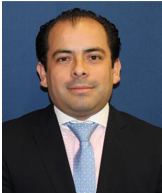Regional Course on Financial Markets
Nassau, Bahamas, September 10–12, 2019
The Regional Course on Financial Markets, was jointly organized by the Center for Latin American Monetary Studies, The Central Bank of the Bahamas and the Deutsche Bundesbank, and was held in Nassau, Bahamas, from September 10-12, 2019. It was attended by 30 representatives from 18 countries from Latin American and the Caribbean (Bahamas, Barbados, Chile, Colombia, Curaçao, Dominican Republic, El Salvador, Guatemala, Honduras, Jamaica, México, Nicaragua, Suriname and Trinidad and Tobago.
The objective of the Course was to strengthen participants’ capacities on financial markets functioning, operation, regulation, and monitoring. The Course guided the participants through the process of financial markets development, the role of different players, the role and tasks of central banks, the development of the government bond market (primary and secondary markets) and the pricing of money market instruments.
Sessions 1 & 2. Benefits & characteristics of developed financial markets.
Sonja Juko and Charlotte Kimmel, Deutsche Bundesbank
Ms. Juko started with an overview of functions and benefits of financial markets. She explained that the basic structure of the financial system consists on money (means of payment), financial instruments, financial markets, financial institutions and financial infrastructure (payment systems and securities market infrastructures). Some of the benefits of financial markets are the contribution to efficient allocation of economic resources, to support economic growth and resilience and to promote poverty reduction.
She explained the general functions of financial services to the economic agents, such as, allocate capital, making payments, mobilize savings, monitor use of funds and transforming risks by providing hedging instruments. The main role of financial markets consisted of match saver and borrower directly and to allow financial instruments to be traded. The prices reflect demand and supply of financial market participants including households, firms, government, financial intermediaries. In contrast to financial intermediaries, financial markets have special functions such as risk sharing, liquidity, and information. Liquidity refers to ease with which assets can be exchanged or sold without loss in value, the higher the liquidity the easier economic agents can allocate funds at any given time. Risk sharing refers to allowing savers to hold a portfolio of different assets, the more developed the financial system the more risk can be shared or diversified. Parts of financial system specialize in information gathering and monitoring, to solve asymmetric information, the better and available information, the lower information costs (transaction costs).
Then, Ms. Juko explained the main role of local financial markets, for example, local financial markets allow governments to finance fiscal deficit without having to resort to foreign borrowing, support the implementation of monetary policy, improve availability of long term financing, improve access to local currency assets and to improve financial deepening and increase efficiency of capital allocation. On the other hand, from the central banks functions, the role of financial markets consisted on data collection, find the source of risk, generate the arena for action, in other words, monetary operations take place within the monetary and the financial system, and the venue for policy transmission, that means, the monetary policy stance is transmitted through the monetary and financial sector.
Finally, she presented an overview of financial market segments, each segment have different purpose and we can distinguish by primary vs second markets, equity vs debt markets, and money vs capital markets. The first one refers to savers and borrowers, the second one to legal rights and obligations attached, the last one refers to the maturity of the traded financial instruments. The functioning financial markets are built on issuers, investors, intermediaries, and infrastructure, where the issuers are in the supply side as borrowers in the primary market, while the investors are in the secondary market. In the demand side, the investors are lenders. Ms. Juko described the characteristics of efficient functioning financial markets, for example, a competitive market structure, low transaction cost, available and accurate information, investor protection, safe market infrastructure, heterogeneity among market participants and a low level of fragmentation.
Session 3. Assessing the stage of financial market development and field of action
Sonja Juko, Deutsche Bundesbank
The aim of this presentation was to reflect on how development of financial markets can generally be promoted, to identify and categorize areas for action to develop financial markets, to reflect on roles and initiatives of different market players or agents for financial market development and reflect on how reforms and measures promote financial market development and it sequence. Finally, she analyzed the financial market development and its areas for action for each CEMLA countries.
Session 4. Assessing the stage of financial market development in CEMLA countries
Chair: Philippe Muller, Bank of Canada
Juan García, Director of Domestic Operations, Banco de México
Mr. García explained the key aspects of developing capital markets and the key role of financing economic growth, influencing financial stability and the transmission of monetary policy. Then, Mr. García presented the size of securities markets as a percentage of GDP for the equity market capitalization, government debt securities outstanding and for corporate debt securities outstanding for emerging market economies (EMEs) and for advanced economies (AEs), where the differences in the spread between both economies for each market are significant. Additionally, the representant of Banco de México explained the evolution of foreign exchange index for CEMLA associate members and showed a comparative chart regarding variables as free-floating, free convertibility, capital control, CLS member, 24/7 trading activity and derivatives market. Finally, he explained the characteristics and the evolution for foreign exchange market, fixed income market, and equity market for each region including Mexico, South America, Central America, and the Caribbean.
Guilherme Pedras, Monetary and Capital Markets Department IMF
Mr. Pedras began his presentation by defining the financial sector and explaining the key five functions of financial sector. Then, he explained the empirical benefits/objectives of the financial sector that consisted of improving economic growth, reduce poverty by enhancing more access to financial services and greater resilience to financial shocks. Mr. Pedras pointed out that one of the challenges is to measure the financial sector, and that nowadays there are several indicators that are relevant. For example, banking sector assets/GDP; Banking sector assets / GDP; Pension funds, mutual funds, insurance sector assets / GDP; Private sector credit / GDP; Public and Private debt securities / GDP; Stock market capitalization / GDP; Bank accounts per thousand adults; Concentration of market capitalization; Turnover ratio of stock market; and Turnover of bonds.
He concluded that there is a large heterogeneity among CEMLA countries, and he highlighted the importance of policies to improve financial development and considered a proper regulation framework.
Session 5. Money markets: Roles and preconditions for market development
Sonja Juko, Deutsche Bundesbank
Ms. Juko provided an overview of key conceptual issues and offers a structured overview of constituting features of money markets and money market functioning. She also reviewed the role of money markets providing key arguments about their importance and why they should be developed. Finally, she discussed the preconditions for the development of money markets highlighting relevant areas for action.
Session 6. Money market development in CEMLA countries and fields of action. The repo market in Mexico: Empirics and stylized facts
Serafín Martínez-Jaramillo, CEMLA
Dr. Martínez explained the importance of interbank markets for the financial system, specially the secured lending market (repo market) and its importance for the well-functioning of the financial system. First, he described the Repo market in Mexico, and mentioned that a relevant aspect of the institutional framework is that banks cannot perform repo o reverse repo transactions with securities issued or guaranteed by themselves and that the secured market in Mexico is very active, with around sixty thousand transactions processed every day in 2016, and a daily average volume of 35 million Mexican pesos. Most of the activity comes from overnight transactions, which constitutes more than 95% of the total transactions. The most important types of counterparties are local individuals and local companies, whose contribution amounts to more than 90% of the total number of transactions. The interbank secured market in Mexico presents a strong disassortative mixing in the financial system network, thus, banks with a small degree tend to connect with banks with a high degree. Also, he presented an analysis of the interest rate spread in the Mexican secured an unsecured interbank market explained by network measures. Some key findings presented by Dr. Martinez are that network structure in the unsecured and secured markets appears to be informative on the spreads and that higher centrality is related to benefits in terms of rates for borrowers and lenders, in particular, for the unsecured interbank market and in certain periods of time. Additionally, Dr. Martínez explained the relations in the unsecured and secured overnight interbank lending markets. He considered the reaction of banks to negative liquidity shock in external repo funding, the effect of trading relationships on volume and interest rates and the persistence of repeated trading in repo and unsecured market. He explained that the results showed that banks are affected by negative external supply shocks, these shocks push banks to increase their interbank repo funding, which has suffered a decrease in external repo funding. The banks that are highly dependent on external repo funding, increase their repo borrowing and decrease their repo lending to other banks. Repo funding shocks lead banks to enter the unsecured market and links in repo markets are strong as in unsecured market.
Session 7. Group discussion: Money market development in CEMLA countries and fields of actions
The Course allowed that country participants shared their recent experience on the development of domestic financial markets. In general, all the jurisdictions have well-functioning interbank markets in both the secured and unsecured segments and even FX swaps. However, derivatives and other markets’ segments may be underdeveloped in many jurisdictions. Few jurisdictions expressed that the interbank secured segment is more developed than the interbank unsecured segment but short-term maturities dominate these markets.
Some countries have already proper infrastructures for the operation of interbank markets but some others need further improvement. Repo markets work well in few jurisdictions, but in many countries, there is still room for improvement and the securities lending market is almost inexistent. Moreover, some jurisdictions are exploring the possibility of extending the collateral base accepted for repo transactions.
On the preconditions for efficient money markets, some jurisdictions still face difficulties regarding the fact that some segments do not operate in local currency and the lack of appropriate financial market infrastructures like Real Time Gross Settlement systems.
Session 8. Characteristics of government bond markets: primary vs secondary market
Charlotte Kimmel, Deutsche Bundesbank
Ms. Kimmel explained the characteristics and issues related to market development. Specifically, the aim of her presentation was to explain the structure of the government bond market, the characteristics of the primary market, how the issuance of government bonds work and the characteristics of the secondary market.
Some of the lessons that can be learnt from Ms. Kimmel are that the government bond markets are the world’s largest bond markets and they are widely used to finance governments, the reliable debt management of government bonds starts with an effective issuance strategy, including a government debt office, an issuance strategy, a suitable maturity structure, and a counterparty analysis. The well-functioning secondary markets are beneficial for risk management, liquidity and information sharing. The secondary market affects the development of primary markets and vice versa. Finally, structural, macroeconomic and institutional factors affect the development of domestic government bond markets. It is necessary that competent authorities could help to overcome some of the boundaries in local government bond markets.
Session 9. Government bond market development in CEMLA countries
Juan García, Domestic Operations Director, Banco de México
Mr. García described the government bond market development in CEMLA countries, and Mexico. Then, he analyzed the foreign exchange market and explained the local market microstructure (secondary market), pointing out that one of the main characteristics of a competitive market structure is having a deep secondary market, fostering the price discovery for all market participants. Also, it is important to have low levels of fragmentation to create liquidity and develop benchmark bonds, since narrowing the variety of debt instruments available in the market consolidates and standardizes government securities issuances. The local market microstructure developments include issuance calendar, auction rules, issuance reopening policy, strips market, liability management operations, and syndicated auctions. He highlighted that a high level of heterogeneity among participants is an attribute that is needed for an efficient market, as it increases liquidity, makes debt markets more attractive, and therefore increases the investor base. As the market evolved into longer-term instruments and different types of rates, the Siefores became relevant market participants. Due to their investment, risk and performance profile, they are currently the dominant player in the Udibonos market or real-rate instruments in Mexico. Additionally, foreign investors have become one of the most important local market participants since this market offers a friendly fiscal scheme and no restrictions for the inflow and outflow of foreign capitals. The derivatives markets set the basis for adequate risk management. This market has better financial tools and indicators for the central bank to evaluate market expectations and efficiently hedge interest rate risk. Finally, he pointed out an important challenge in Mexico regarding the corporate debt market. This market’s primary and secondary activity is practically null, and lagged compared with other emerging market economies. Some of the benefits of developing this market include to provide the investors with more tradable securities with attractive returns, therefore, an increase in foreign inflows, also, allow local corporates to access additional financing channels with lower costs.
Philippe Muller, Senior Director, Financial Market Department, Bank of Canada
Mr. Muller explained the Canada’s financial system, and the fixed-income and government bond markets. He described the developments of government bond market. For example, the efforts to enhance liquidity, the importance of transparent and consistent issuance process of the primary market and the creation of a thorough debt distribution framework and adjust issuance in response to market pressures, and finally, the advances in electronic trading and the internationalization of Canadian debt markets
Ms. Carline Irving, Manager, Domestic Markets Department, Ministry of Finance and the Public Service of Jamaica
Ms. Irving provided important macroeconomic features of Jamaica, and explained debt management objectives in Jamaica, for example, the raise of funds at the lowest possible costs and at a prudent level of risk. Then, she continued explaining the domestic debt composition, institutional developments according to the international best practices. Also, she highlighted the benefits given increased levels of liquidity, low-interest-rate environment, facilitation of a crowding-in effect, a sustained robust demand for government of Jamaica securities. However, she pointed out that the challenge Jamaica face is to improve secondary market trading. Finally, she highlighted the importance to adopt policies in accordance with the medium-term debt strategy, to continue exploring opportune liability management operations, and to continue broadening and diversifying the domestic market investor base geographically among other strategies.
Session 10. Primary dealer system and market making
Chair: Carline Irving, Ministry of Finance and the Public Service of Jamaica
Juan García, Director of Domestic Operations, Banco de México
Mr. García developed his presentation with the definition, principal characteristics, and advantages of a primary dealer system, then explained the experiences from some countries and finally the case for Mexico. He defined a primary dealer system as an agreement between a debt management office and a group of institutions to pursue a common strategy for the well-functioning and development of primary and secondary markets for government securities. He pointed out the main objectives of a primary dealer system, as building a stable source of demand for securities, providing liquidity in the secondary market, building distribution channels and expanding the investor base and promote public confidence in the integrity of the government securities market. Also, he highlighted some advantages from the primary dealer system, for instance increases and ensures coverage at primary auctions, the improve of secondary market conditions, ensure the development and functioning of the secondary market for those markets in an early development stage. On the other hand, the disadvantages could be the regular measuring and monitoring to ensure compliance, misconception of debt manager guaranteeing creditworthiness and potential limit competition, because of the advantages that primary dealers acquire over other institutions. Also, Mr. García presented three comparative charts across countries about the selection criteria, obligation, and rights regarding the role of primary dealers and the development of domestic financial market for each country. Finally, he presented an in-depth analysis of the primary dealers’ system in Mexico, regarding its characteristics, development, contributions, and challenges.
Philippe Muller, Senior Director, Financial Market Department, Bank of Canada
Mr. Muller organized his presentation by explaining first the context of the Canadian primary dealer model, the international context, Canada’s debt distribution framework, and the primary and secondary markets. To sum up, he explained that Canada implemented a primary dealer model due to concerns around market well-functioning, currently framework functioning very well.
Mr. Muller mentioned that primary dealers have to fulfill several obligations in exchange for unique privileges. Also, there is a long-term trend of increasing concentration in Canadian bond markets (across GoC, provincial issuance, corporates). The secondary markets continue to function normally, with stable levels of liquidity.
For next steps, he pointed out that bond markets globally and domestically are changing due to the implementation of post-crisis regulatory reforms; and because of an increase in the use of automated, electronic trading.
Guilherme Pedras, Monetary and Capital Markets Department IMF
Mr. Pedras made an overview of primary dealers (PD) and primary dealer system and explained the importance of introducing them to decreased refinancing risk, lower funding costs, and faster market development. Also, he described the preconditions for primary dealer system to work, for example, a large enough debt and investor base to justify the appointment of a certain number of primary dealers. The Debt Management Office needs to create the appropriate environment for primary dealers to work. However, the PD system is not a necessary condition for market development and not a sufficient condition for market developments. He also made an overview of the countries that use this system and the risk it represents, as limit competition and contribute to collusion behavior, so the solution is to provide the PDs incentives to avoid collusion among them. Finally, he explained that the challenge is to strike the right balance between rights (benefits) and obligations (duties), and to define the selection criteria, regarding financial capacity, active involvement in Government Securities market, management capacity, suitable technological infrastructure, minimum credit rating, participation in money market, among others.
Taffi Bryson, Acting Head of Department and Anakaye Thompson, Assistant Head of Department, Market Operations and Analysis Department, Bank of Jamaica.
The representatives from the Bank of Jamaica began their presentation explaining the evolution of the Primary Dealer system that started in April 1994, to enhance market development. In June 2015 the Bank revamped the system to access the performance of primary dealers through a SMART (specific, measurable, adjustable, regular and transparent) assessment which was implemented using specific weights to each performance criteria, quantifiable assessment system, adaptable for different financial environments, and transparent (all dealers were fully aware of the system). After some IMF recommendations to the primary dealer system, in September 2018, several enhancements were made, for example: the codification of the primary dealer agreement; a revamp of primary dealer assessment, including additional credit given to PDs for participating in longer-dated Government of Jamaica securities; and an increase of incentives to high performing PDs. Finally, they presented the benefits from the evaluation of the current system, the challenges faced by primary dealers and the next steps for the current system.
Session 11. Market dislocations
Charlotte Kimmel, Deutsche Bundesbank
Ms. Kimmel begun her presentation with the definition of financial market dislocations from Pasquariello (2014) “Financial market dislocations are elusive to define, and difficult to measure.” She also explained the importance of studying financial market dislocations, for example, the negative influence on the financial system and in global economic development. She emphasized that market dislocations are difficult to measure. As examples, she presented the asset price bubbles in the stock market, the deviations from covered interest rate parity and the European sovereign bond market.
She concluded her presentation explaining that financial market dislocations are circumstances in which financial markets, operating under stressful conditions, stop pricing assets correctly in an absolute and relative basis. This kind of dislocations can occur in all market segments and have influence on economic development and effects on financial stability and leading to a financial crisis. she pointed out that not every failure is a market dislocation and additional research is needed to understand if other reasons explain such failures.
Session 12. Experiences with market dislocations in CEMLA countries
Philippe Muller, Senior Director, Financial Market Department, Bank of Canada
Mr. Muller presented different types of market dislocations; for example, in the primary market (auctions) dislocations refer to poor auction results, uncovered auctions, and concentration of auction winners. On the other hand, in the secondary markets, he referred to the cash market, repo and special repo markets, and settlements fail. He explained different measures for central banks and debt managers to mitigate risks of market dislocations by a design of the debt distribution framework, alignment of objectives with regulatory and self-regulatory bodies and the design of the Government of Canada debt management strategy.
Finally, Mr. Muller presented the Bank of Canada measures as securities lending program, augmenting custodial services provided, adjusting central bank asset purchases, providing liquidity to primary dealers upon a market-wide or systemic disruption, monitoring on a regular basis, and analyzing fixed income markets and others.
Liliana Cavieres, Senior Economist, Banco Central de Chile
Ms. Cavieres explained the Chilean experiences with market dislocations starting with the policy framework, then talking about the characteristics of main financial markets and the events that caused relevant movements in domestic prices. She explained that regarding fixed income and money market instruments, inflation linked instruments and corporate bonds. She presented the Chilean fixed income and money market, by type of currency, type of instrument and by participants. She pointed out that in nominal instruments, time deposits predominate while in inflation linked, corporate bonds have the largest market share. Pension funds have the majority of their portfolio in the long term.
Finally, Ms. Cavieres explained that in the foreign exchange market, non-residents have a buyer USD forward position, while pension funds usually sell USD in derivatives, and she showed the evolution of the Chilean peso and the copper price fluctuation, which are in line with other emerging currencies.
Session 13. Group discussion: Fostering demand and supply conditions in financial markets – Role of central banks and other players
In this session the participants shared their views on how to foster demand and supply conditions from the central bank perspective. Countries in the region are in different stages of financial markets development and as a consequence they face different challenges. In some countries the central banks do not issues securities but acts as the government agent, therefore, even in those cases the central bank is heavily involved on the development of financial markets. However, two key aspects were recognized by all the participants as relevant to ensure an adequate demand, namely: macroeconomic stability and a well specified calendar for the issuance of securities. Moreover, the existence of an issuance calendar would allow better liquidity management. Another relevant aspect which was brought forward was to engage with market participants, in particular with primary dealers. On the supply side there was a question on whether the market would be able to absorb all the securities supplied. Financial education was also pointed as a relevant factor as well as a robust legal framework.
Some countries expressed that roadshows abroad allows for the involvement of foreign investment and that the existence of a variety of instruments is also important. One jurisdiction stressed that the presence of more than one issuer is desirable and good communication is vital in order to avoid interference among them.
Transparency was recognized as an important aspect for financial markets development as well as the acceptance of a larger variety of instruments as collateral for repo transactions. An adequate fiscal balance, market autonomy, better disclosure standards, incorporating more players and appropriate financial market infrastructures were mention as important aspect for an adequate development of financial markets.
Welcoming remarks
Charlotte Kimmel, Deutsche Bundesbank
Gevon Moss, Central Bank of the Bahamas
Serafín Martínez-Jaramillo, CEMLA
Overview of the course & tour de table
Deutsche Bundesbank & course participants
Sessions 1 & 2. Benefits & characteristics of developed financial markets
Sonja Juko and Charlotte Kimmel, Deutsche Bundesbank ![]()
Session 3. Assessing the stage of financial market development and field of action
Sonja Juko, Deutsche Bundesbank ![]()
Session 4. Assessing the stage of financial market development in CEMLA countries
Chair: Philippe Muller, Bank of Canada
Juan García, Director of Domestic Operations, Banco de México ![]()
Guilherme Pedras, Monetary and Capital Markets Department IMF
Session 5. Money markets: Roles and preconditions for market development
Sonja Juko, Deutsche Bundesbank ![]()
Session 6. Money market development in CEMLA countries and fields of action. The repo market in Mexico: Empirics and stylized facts
Serafín Martínez-Jaramillo, CEMLA ![]()
Session 7. Group discussion: Money market development in CEMLA countries and fields of actions
Moderated by Sonja Juko, Deutsche Bundesbank
Session 8. Characteristics of government bond markets: primary vs secondary market
Charlotte Kimmel, Deutsche Bundesbank ![]()
Session 9. Government bond market development in CEMLA countries
Chair: Guilherme Pedras, IMF
Juan García, Director of Domestic Operations, Banco de México
Philippe Muller, Senior Director, Financial Market Department, Bank of Canada ![]()
Ms. Carline Irving, Manager, Domestic Markets Department, Ministry of Finance and the Public Service of Jamaica ![]()
Jorge Eduardo Szabo Vasquez, Capital Market Chief, Banco Central de la República Dominicana
Session 10. Primary dealer system and market making
Chair: Carline Irving, Ministry of Finance and the Public Service of Jamaica
Juan García, Director of Domestic Operations, Banco de México ![]()
Philippe Muller, Senior Director, Financial Market Department, Bank of Canada ![]()
Guilherme Pedras, Monetary and Capital Markets Department IMF
Taffi Bryson, Acting Head of Department and Anakaye Thompson, Assistant Head of Department, Market Operations and Analysis Department, Bank of Jamaica ![]()
Session 11. Market dislocations
Charlotte Kimmel, Deutsche Bundesbank
Session 12. Experiences with market dislocations in CEMLA countries
Chair: Serafín Martínez-Jaramillo, CEMLA
Philippe Muller, Senior Director, Financial Market Department, Bank of Canada ![]()
Liliana Cavieres, Senior Economist, Banco Central de Chile ![]()
Session 13. Group discussion: Fostering demand and supply conditions in financial markets – Role of central banks and other players
Moderated by Sonja Juko and Charlotte Kimmel, Deutsche Bundesbank
Open issues, event review and closing remarks
CEMLA has jointly organized with the Deutsche Bundesbank the Financial Markets Course with a distinguished group of experts from different institutions like Banco de Mexico, Bank of Canada, Banco Central Chile, the IMF, Banco Central de la República Dominicana, Bank of Jamaica and specially the Deutsche Bundesbank, who shared their perspectives and knowledge on financial markets. The aim of this course is to strengthen participants’ skills in financial markets functioning, operation, regulation, and monitoring.
 Serafín Martínez-Jaramillo
Serafín Martínez-Jaramillo
Advisor, CEMLA
Serafin Martinez-Jaramillo is a senior financial researcher at the Financial Stability General Directorate at Banco de México and currently, he is an adviser at the CEMLA. His research interests include: financial stability, systemic risk, financial networks, bankruptcy prediction, genetic programming, multiplex networks, and machine learning. Serafin has published book chapters, encyclopedia entries and papers in several journals like IEEE Transactions on Evolutionary Computation, Journal of Financial Stability, Neurocomputing, Journal of Economic Dynamics and Control, Computational Management Science, Journal of Network Theory in Finance and some more. Additionally, he has co-edited two books and two special issues at the Journal of Financial Stability. Serafin holds a PhD in Computational Finance from the University of Essex, UK and he is member of the editorial board of the Journal of Financial Stability, the Journal of Network Theory in Finance and the Latin American Journal of Central Banking.
 Sonja Juko
Sonja Juko
Senior Advisor for Monetary Policy and Financial Market, Deutsche Bundesbank
Sonja Juko works as a senior advisor for monetary policy and financial market issues at the Centre for Technical Central Bank Dialogue of Deutsche Bundesbank. In this position, she is responsible for the conceptualization and organization of international as well as bilateral trainings for central bankers on monetary policy and financial market issues. As a lecturer she covers herself a vast range of subjects using a broad variety of teaching methods and develops new course programs. Her main interests are the implementation and communication of monetary policy and interactions with financial markets. Since joining the Center for International Central Bank Dialogueend-2011 she has conducted more than 75 training activities for central bankers both, in Germany as well as abroad.
She has been involved in EU Twinning projects. From 2015-2016 she was part of a team of advisors supporting the Tunisian Central Bank in their efforts to improve the effectiveness of its framework for monetary policy implementation. From 2018 until mid 2019 she was leading a team of central bank experts advising the National Bank of the Republic of Belarus (NBRB) in the area of monetary policy communication.
Prior to her current position, from 2008 until 2011, she worked as an analyst in the Financial Stability Department of the German central bank. She joined Deutsche Bundesbank in 2007 after obtaining her Master’s degrees in economics and in political science and having conducted internships at the European Central Bank, the German Finance Agency (Agency responsible for managing the German public debt) and the German Stock Exchange. Sonja holds a Doctorate in Political Science from the University of Frankfurt.
 Charlotte Kimmel
Charlotte Kimmel
Senior Advisor for Financial Stability, Deutsche Bundesbank
Charlotte Kimmel has joined the Centre for International Central Bank Dialogue of Deutsche Bundesbank in May 2019 as a senior advisor for financial stability issues. In this position, she is responsible for designing, preparing and running international as well as bilateral trainings for central bankers on financial stability issues.
Prior to her current position, from 2012 until April 2019, Charlotte worked in the Financial Stability Department of the Deutsche Bundesbank, dealing with a variety of questions including how best to cope with existing stocks of non-performing loans (NPLs) in Europe, and how to address NPLs as a macroprudential supervisor. On this topic, she was member of a working group and she contributed to reports of the European Systemic Risk Board (ESRB). Recovery and resolution of banks as well as analyzing and evaluating plans to reform business models of banks (separation of commercial and investment banking vs universal banking) were also among her topics.
Before joining the Financial Stability Department of the Deutsche Bundesbank, she worked for two years at the Financial Stability Department of the European Central Bank. Here she was involved in detecting and assessing systemic risk for Global Large and Complex Banking Groups, and she served as an analyst for credit risk in the European banking sector, regular contribution to the ECB’s Financial Stability Review, Surveillance Note and Risk Analysis Report.
Charlotte started her career at the Deutsche Bundesbank at the Banking Supervision Department of the Bundesbank. Here she took part in developing a tool to enhance coordination of micro- and macroprudential analysis, she drafted and conducted surveys among German (systemically relevant) banks, and she kept working as an analyst for credit risk in the German banking sector, thereby contributing regular to the Bundesbank’s Financial Stability Review since 2006. Charlotte holds a Master Degree in International Economics from the University of Tübingen, Germany.
 Juan Rafael García Padilla
Juan Rafael García Padilla
Director of Domestic Operations, Banco de México
He holds a degree in Economics from the Monterrey Institute of Technology and Higher Education, State of Mexico campus (ITESM-CEM). He has a master's degree in Business Administration (MBA) with a specialty in Financial Administration, from the University of North Carolina. Since 2001 he works at Banco de México. First, he worked as a money trader at the operating table of the peso-dollar market, becoming a chief money trader. He subsequently served as head of the Office of Secondary Market Operations, then deputy manager of Market Operations and currently serves as Director of Domestic Operations, responsible for the implementation of the monetary and exchange rate policy of the central bank and responsible for the activities of the Bank of Mexico as financial agent of the Federal Government.
 Guilherme Pedras
Guilherme Pedras
Senior Financial Sector Specialist, International Monetary Fund
Guilherme Pedras joined the International Monetary Fund (IMF) in 2009, where he works in the Monetary and Capital Markets Department as a Senior Financial Sector Specialist. Before joining the IMF Mr. Pedras worked for 12 years in the Ministry of Finance of Brazil, where he became the Head of the Debt Management Operations Department. In this position, he was responsible for all domestic and external debt management operations, for implementing policies to develop the local public bond market and for the coordination mechanisms with monetary policy. Guilherme Pedras has a Master Degree in Economics.
Philippe Muller
Senior Director, Bank of Canada
Philippe Muller was appointed Senior Director of the Bank’s Financial Markets Department (FMD) in August 2018. Mr. Muller is responsible for the Department’s front office operations and IT applications.
Mr. Muller joined the Bank in 1997 and has held various positions within the monetary policy, financial stability and funds-management functions, progressing from analyst roles to his current position as Senior Director of FMD. Mr. Muller was recently Senior Director of the Bank’s Financial Risk Office, comprising three functional groups: Credit Rating Assessment, Middle Office and Reporting, and Risk Modelling. He has developed expertise in the areas of monetary policy implementation, financial system soundness and efficiency, debt and treasury management, foreign exchange reserves management, and risk (treasury and credit) management. He holds a master of science degree in finance from HEC Montréal.
 Carline Irving
Carline Irving
Acting Manager Portfolio Management, Ministry of Finance and Public Service of Jamaica
Carline Irving joined the Debt Management Branch of the Ministry of Finance and the Public Service in October 2001 and is currently Manager (Acting), Portfolio Management with responsibility for the domestic market. She also worked as Securities Officer as well as Monitoring and Disbursement Officer in the Branch. Prior to joining the Debt Management Branch, Mrs. Irving worked for over 12 years in the Financial Sector.
Mrs. Irving holds a BSc. in Management Studies from the University of the West Indies and a Post Graduate Diploma in General Management from the Management Institute for National Development.
 Jorge Eduardo Szabo Vasquez
Jorge Eduardo Szabo Vasquez
Head of the Division of Capital Markets Analysis, Banco Central de la República Dominicana
Jorge E. Szabo V. is the Head of the Division of Capital Market Analysis of the Central Bank of the Dominican Republic, institution where he has served for the past eleven years. He has extensive experience in economic and financial research, derivatives, capital markets, and financial regulation. For the recent years, Mr. Szabo has been analyzing statistics of the capital market of the Dominican Republic, researching a diversity of financial and regulatory subjects while contributing to the creation and implementation of several market regulations.
Mr. Szabo has a Bachelor Degree in Economics and a Masters in Risk Management and Treasury from La Pontificia Universidad Católica Madre y Maestra and a Master’s in Business Administration (MBA) with a concentration in Finance from Hult Internation Business School.
 Taffi Byson
Taffi Byson
Acting Head of Department of the Financial Markets Division, Bank of Jamaica
Taffi Bryson is the Acting Head of Department of the Financial Markets Division at the Bank of Jamaica, responsible for market operations and analysis of both foreign exchange as well as the money and capital markets. For over a decade, he has been a central bank economist with expertise in econometrics, real sector analysis, as well as the model-based monetary policy. During his tenure at the Bank of Jamaica, Taffi has also been seconded to the International Monetary Fund resident representative’s office in Jamaica.
A strong believer in stepping outside of your comfort zone to challenge yourself to achieve goals that are perceived to be unattainable, Taffi is also a beekeeper with a small apiary and honey business and enjoys DIY projects, with varying success, on the weekend. In addition to his love for the environment, he is an avid music-lover with an obvious bias towards reggae and dancehall music.
 Anayake Thompson
Anayake Thompson
Market Operations and Analysis Department, Bank of Jamaica
Like Theodore Roosevelt, Anakaye Thompson trusts in the philosophy that states “believe you can and you’re halfway there.” This has been one of the most influential guiding principles in both her professional and personal life. Hence, when the task faced seems insurmountable, she envisions the results, believes she is able to achieve and works systematically towards achieving the desired goal.
Anakaye has been employed to Bank of Jamaica since 2007, and she currently serves as Director – Trading Operations and Statistical Support Section, Market Operations, and Analysis Department (MOAD). In this position, she assists in overseeing the implementation of monetary policy, ensuring the provision of timely and accurate assessment of the domestic and international financial markets to inform Bank of Jamaica’s policy decisions. In her role as Director, Anakaye also administers the Primary Dealer system. Before assuming the role of Director, Anakaye served as Primary Dealer Analyst in MOAD for several years.
In her spare time, Anakaye enjoys spending time with her husband Hugh and children, Hugh Michael and Hana. She also spends her relaxation time learning new things and growing as an individual, jogging and enjoying nature.
 Liliana Cavieres
Liliana Cavieres
Senior Economist in Financial Markets Division, Banco Central de Chile
Liliana Cavieres, Economist and Master of Finance, University of Chile. Senior professional with experience in the areas of finance and macroeconomics in the Central Bank of Chile.
2008 to date: Senior Economist in Financial Markets Division. Economic framework and analysis of domestic and international financial markets. 2012: Secondee in Statistics Division, Organization for Economic Development Cooperation (OECD), Paris, France. Main financial challenges of institutional investors in OECD countries during periods financial crisis and in an environment of aging population. 2006-2008: Economist in International Analysis Management, Research Division. 1999-2006: Economist in Management and Financial Risk Assessment Department.

